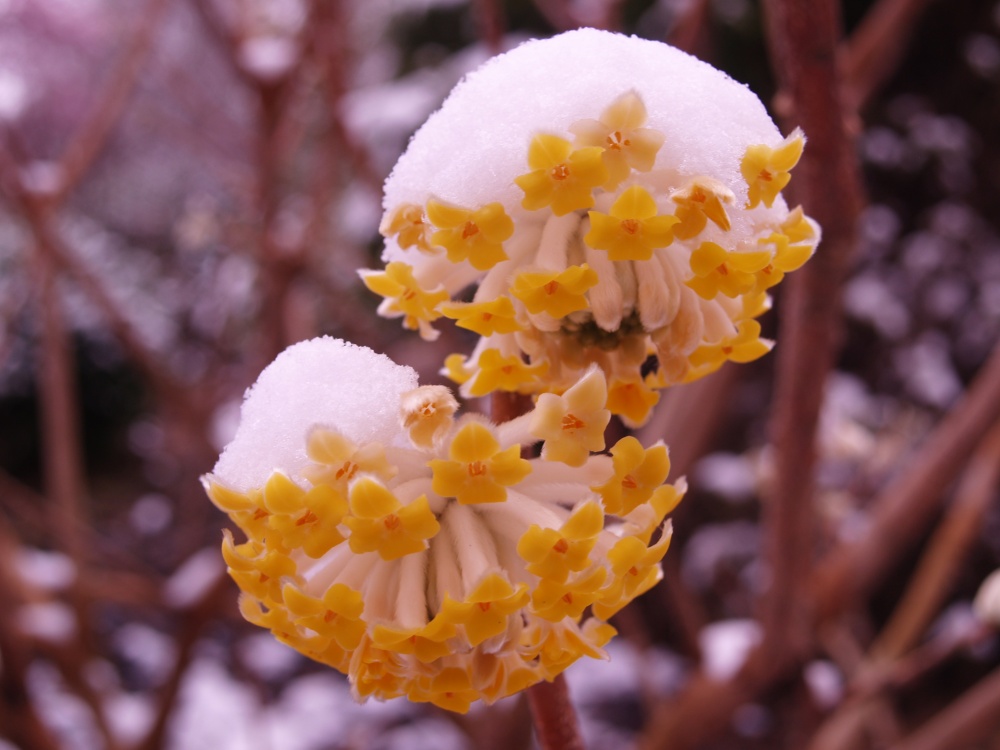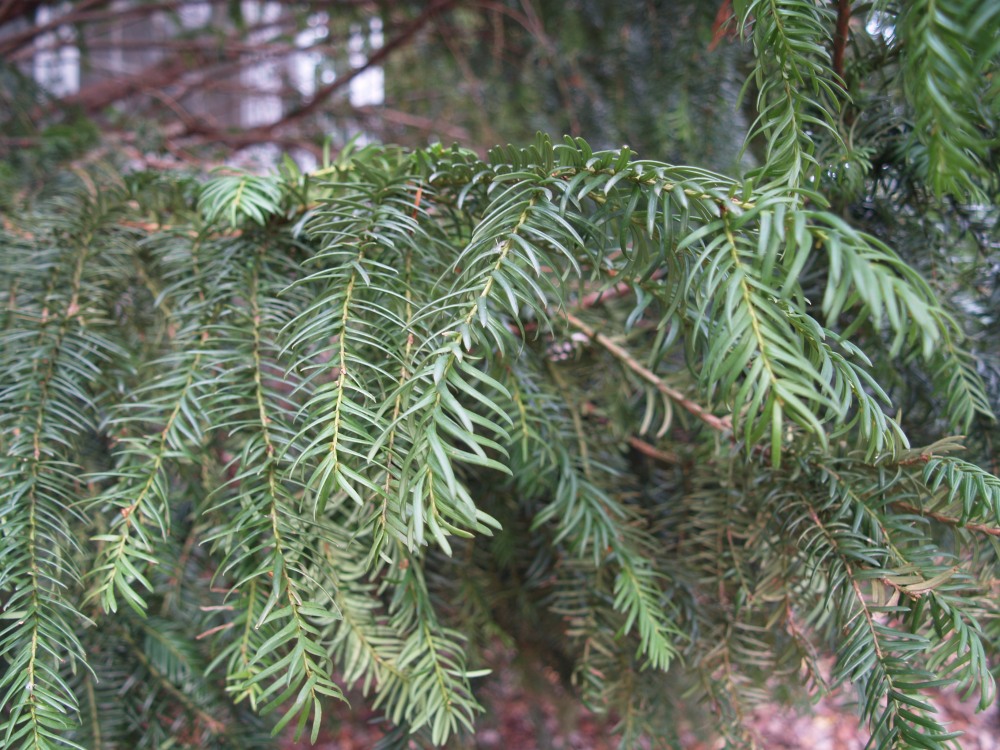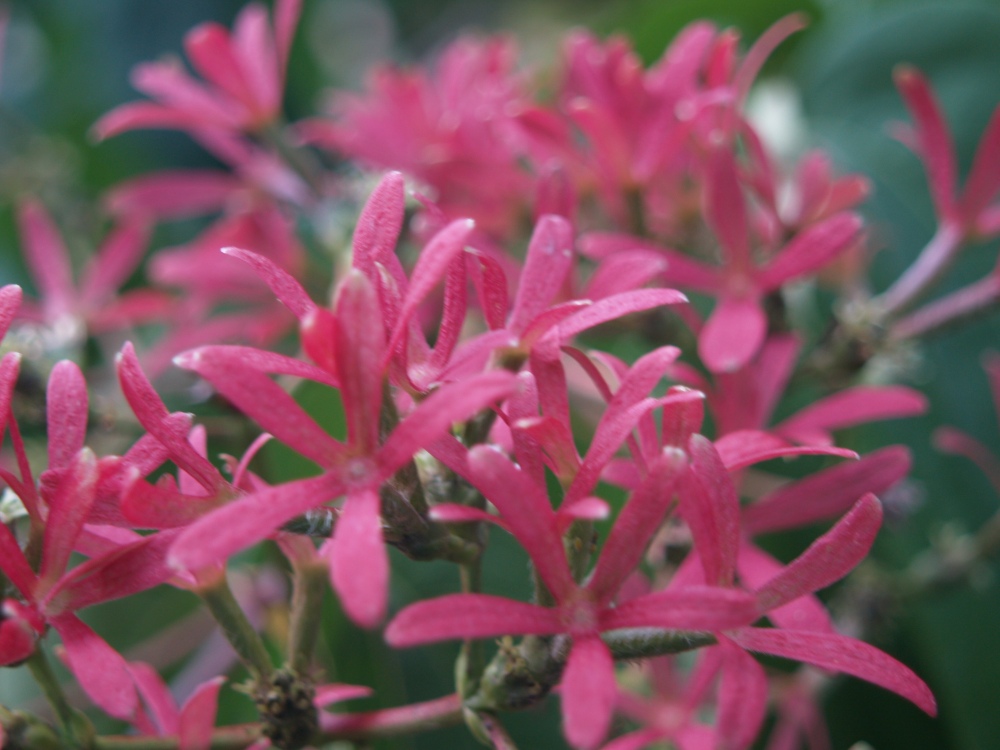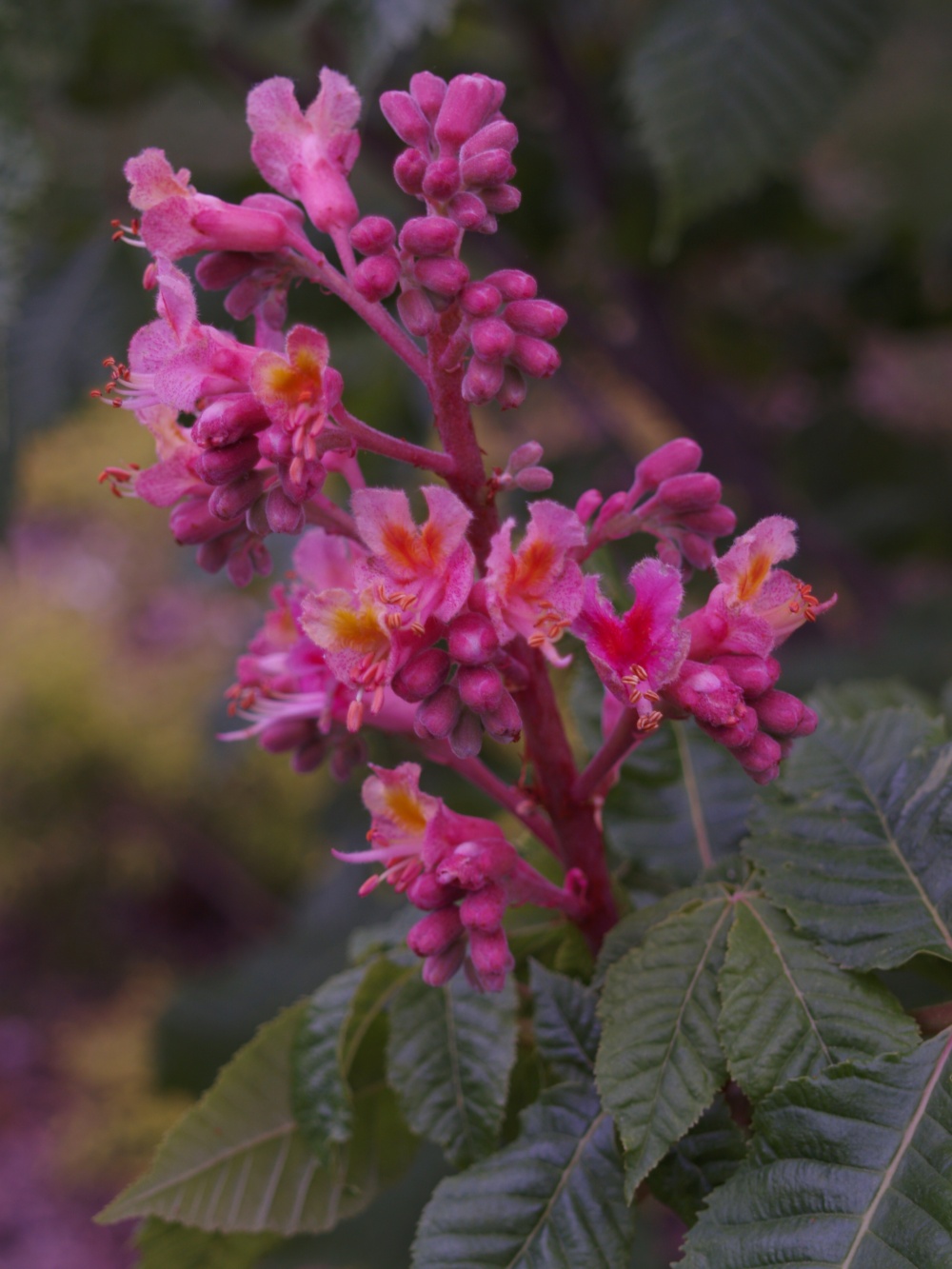For the better or the worse, the garden changes. Plants grow (if the gardener is so fortunate not to kill everything), but in time this can present problems as trees shade smaller shrubs and perennials. While Japanese maples and dogwoods grow vigorously, a tickseed or sedum will invariably require transplanting to a sunnier location, and if the gardener is preoccupied with other things (or too lazy) the perennials eventually fade and disappear.
Shrubs can also grow beyond the gardener’s expectations. Despite careful research, a paperbush (Edgeworthia chrysantha, above) has grown to double the size listed in references. Where no reference was consulted, an assumption was made that a yellow tipped Dovaston yew (Taxus baccata ‘Dovastoniana Pendula’, below) would grow barely past head high. The yew, planted immediately beside the house, quickly skyrocketed past the basement and first story ceilings, and it spread so wide that only a few ferns can be planted within fifteen feet of its massive trunk.
Too many complications arise when the gardener foolishly jams this or that into a space that is hardly adequate, or when miscalculations are made and a site proves too sunny or shady. Failure to provide adequate water for new introductions to the garden is a particular problem, but in this garden more plants are lost as exuberant shrubs overwhelm less sturdy neighbors.
In recent years one storm or another has doomed or disfigured a handful of trees that had grown to significant stature, and again this week an ice storm caused a maple from the neighboring forest to crash onto a venerable ‘Forest Pansy’ redbud (Redbud canadensis ‘Forest Pansy’, above). The redbud had slowly faded as shade in this portion of the garden grew more dense, and so the blow from the loss of this twenty year old presence was lessened. Now, there is a hole to fill, with the winter months ahead to consider what is to fill the gap.
When a Seven Son tree (Heptacodium miconioides, above) was lost to the wind of a summer storm, months passed before an adequate replacement was determined, and still I question if the Red Horsechestnut (Aesculus x carnea, below) is completely satisfactory. In fact, the horsechestnut’s blooms are superior, but the Seven Son flowers in late summer when there are fewer blooms, and the clusters of small white flowers are followed by purple-pink drupes. Marvelous, but I suppose the horsechestnut is also. Visitors seem pleased by the choice, and I suppose I should be more impressed.
Occasionally, I yearn for a fresh start, a blank canvas to work with, and perhaps a chance to practice the lessons of several decades in the garden. Only the best would be selected to plant in this new garden, and all would be planted with space to display their considerable charms. But, I haven’t the patience and no longer have the energy to undertake such a project. But, despite a shrub or two that overwhelms a neighbor, or a tree that is toppled in a gust, there is much to be thankful for in a mature garden.